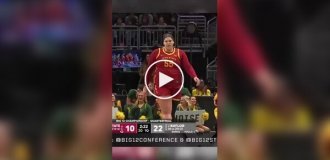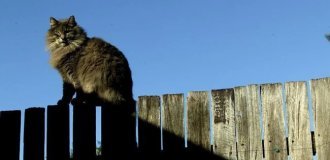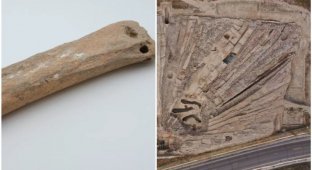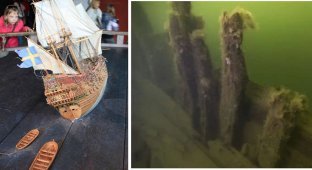In Sudan found a monastery complex, decorated with unique Christian frescoes (4 photos)
Archaeologists from the Polish Center for Mediterranean Archeology at Warsaw University discovered a mysterious complex of premises, built of raw brick and decorated with frescoes for Christian motives. The find was made in the medieval monastery of Old Dongola on bank of the Nile, more than 500 km north of Khartoum. 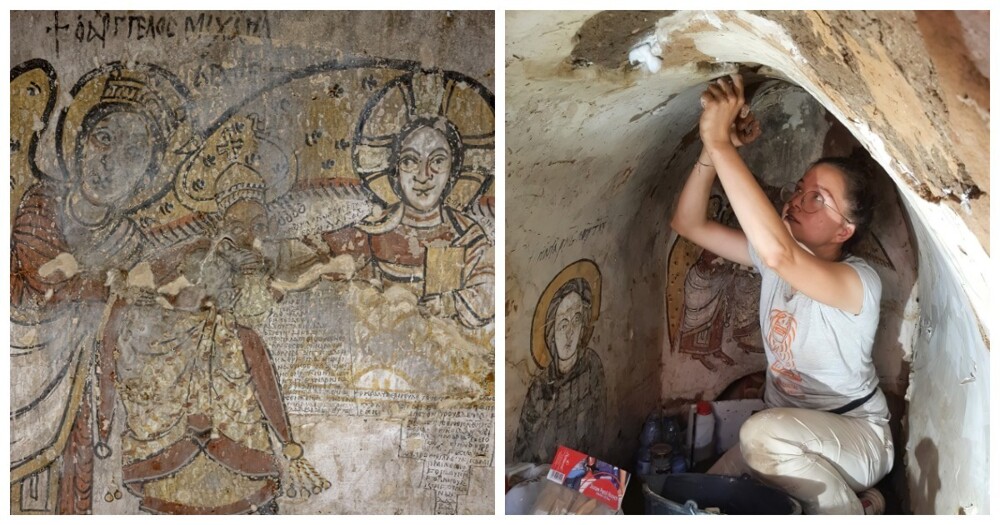
Old Dongola (Tungul in Old Nubian) was capital of Makuria, one of the most prominent medieval African states. By the end of the 6th century, it had converted to Christianity. In the 7th century fought with the Muslim Arabs, and as a result of these wars was signed The Treaty of Bakt, which established relative peace between opposing sides. This peace lasted until the thirteenth century.
The discovery was made while researching the houses of the period Funj (16th-19th centuries AD). Within the main monastery complex Polish archaeologists have discovered a second, well-preserved church with bright frescoes and inscriptions in Greek and Old Nubian. 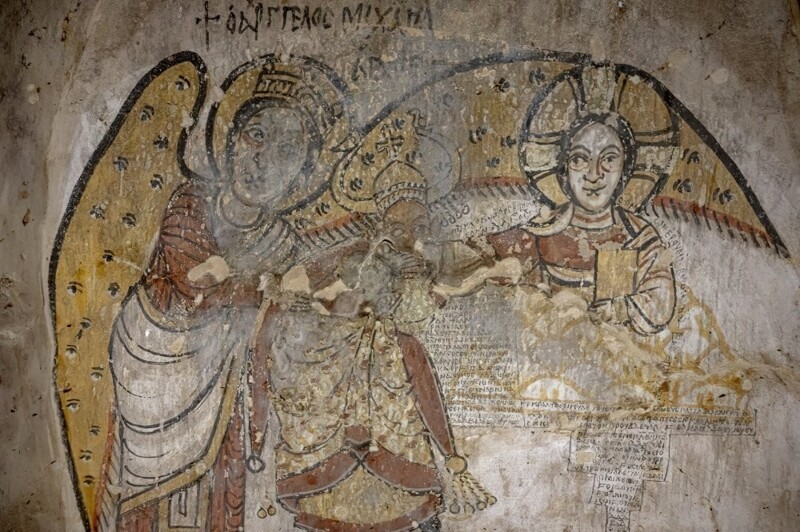
Surprisingly, there was a passage under the floor of one of the houses, leading to a small room with frescoed walls. On them - images of the Virgin, Christ, the Archangel Michael and the Nubian ruler. The last scene is atypical: the ruler bows and kisses the hand Christ, seated on the clouds, he is helped by the Archangel Michael, whose spread wings protect both the ruler and Christ. There is no such scene. parallels in Nubian painting. 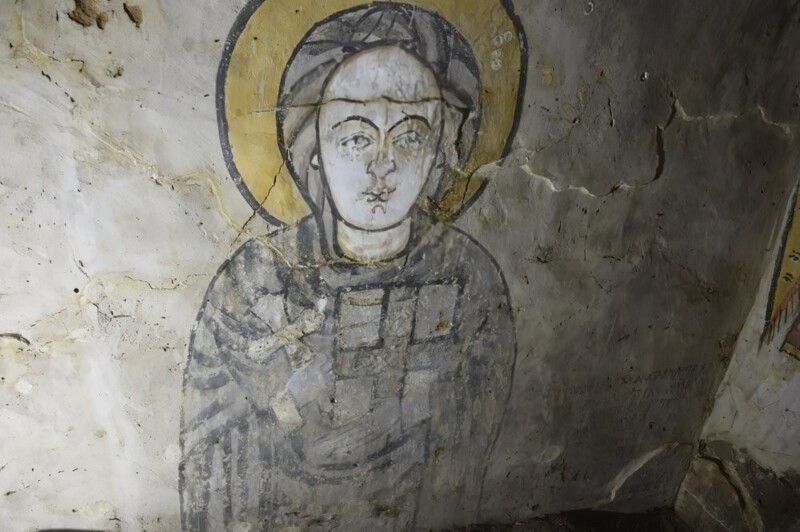
Similarly, the figure of the Virgin Mary on the northern wall of the room does not fit into the standard repertoire of depictions of Mary in Nubian art. The Mother of God is depicted in a majestic pose, dressed in dark clothes. She holds a cross and a book in her hands. On the opposite wall is Christ. His right hand is in a gesture of blessing, while his left is holding a book which only partially preserved.
Researchers are currently studying the inscriptions, accompanying pictures. Preliminary analysis of Greek inscriptions showed that these are the texts of the Liturgy of the Presanctified Gifts. scene with Nubian ruler accompanied by an extremely difficult to decipher ancient Nubian inscription. Preliminary interpretation shows that the text contains several references to a king named David, as well as prayer to God for the protection of the city. 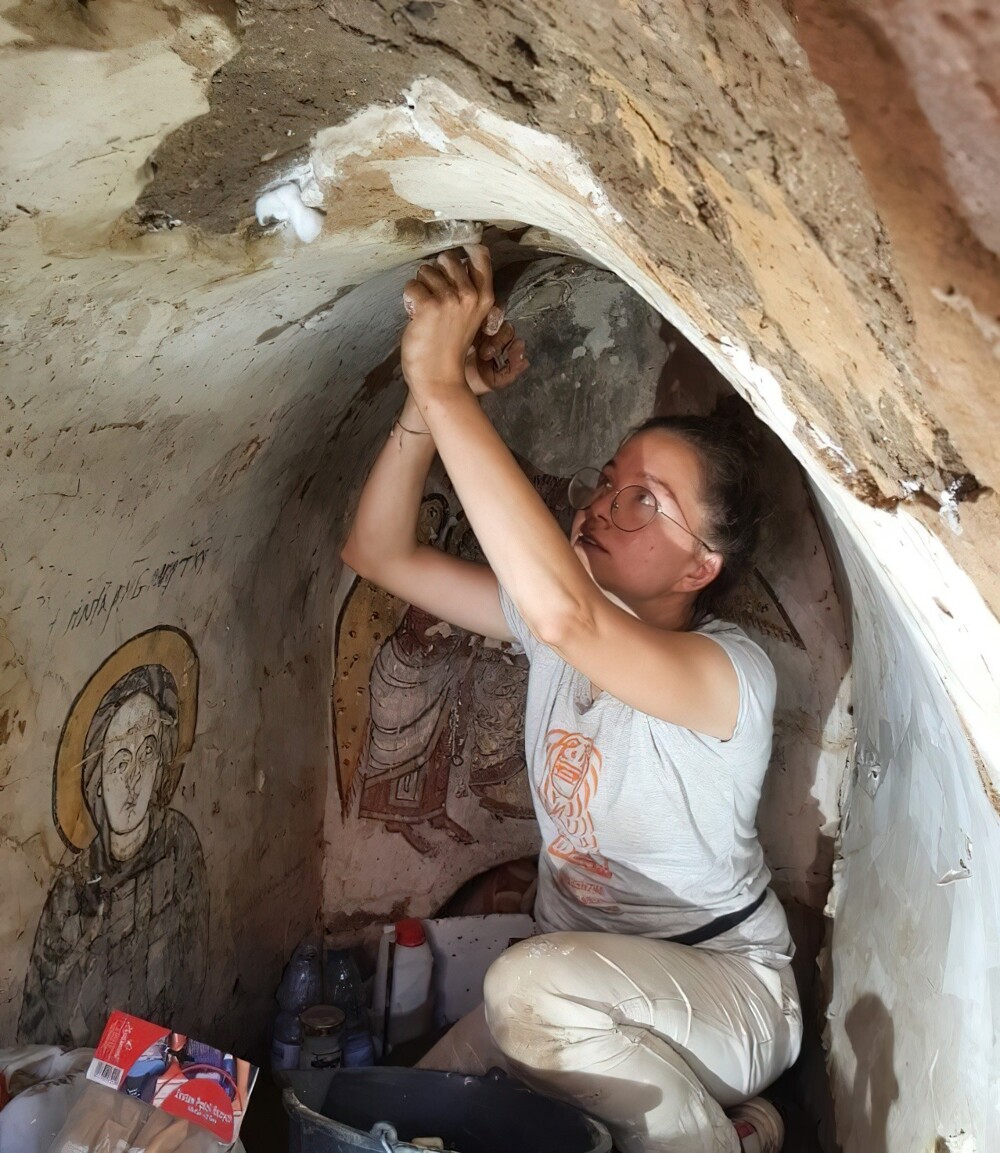
The city mentioned in the inscription is most likely Dongola, and the royal figure depicted in the fresco is most likely King David. David was one of the last rulers of Christian Macuria, and his reign marked the beginning of the decline of the kingdom. For unknown reasons, the king David attacked Egypt, which responded by invading Nubia, as a result which Dongola was sacked for the first time in its history.
The researchers suggest that the painting could have been made during the approach of the Mamluk army or when the city was under siege.
However, most of all scientists are baffled by the complex itself. rooms where the frescoes were found. The spaces made up of raw bricks and covered with vaults and domes are quite small. Although the room with the image of King David rises seven meters above the medieval ground level, it looks like a crypt. The building is located next to sacred building known as the Great Church of Jesus, which, was probably the cathedral of Dongola and the most important church in kingdom of Makuria. According to Arabic sources, the Great Church Jesus provoked the attack of King David on Egypt and the capture of ports Aidhab and Aswan.
These and other questions about the mysterious structure can answer further excavations. But this is a matter of the future, and now archaeologists busy with the conservation and restoration of the found wall paintings.







